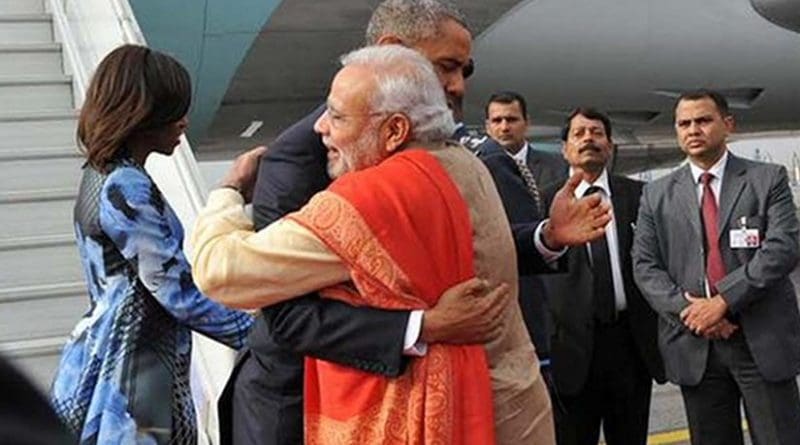Rethinking Future Of Asia: Moving Beyond US Dominance – Analysis
By Observer Research Foundation
By Samir Saran and Ashok Malik
Asia will shape the 21st century as much as the Atlantic consensus shaped the 20th century, or Europe the 19th. But to get there, Asia has to pursue a new project, one that begins to create a political Asia.
Like the Atlantic order flourished on the basis of the Bretton Woods and UN systems, Asia needs a reordering of the global landscape. We need a new management, a new board of directors and a new security architecture.
Any usable platforms?
At the very least, this emerging Asian system needs to bring three resident actors (China, Japan and India) and two regional stakeholders (the United States and Russia) to the same table. Other sub-regional influencers should be drawn in as well.
Could the East Asia Summit, of which all these countries are members, serve as a possible platform for such an architecture? Not quite. The East Asia Summit cannot really address the concerns of Central and West Asia.
Alternatively, Ii an expanded mandate for the G20 (seven Asian countries, two more if one were to include Turkey and Russia) the answer? Or do we need to think about a greenfield institution?
Three possibilities
Three possibilities — distinct, but not mutually exclusive — emerge. At the commencement of the 21st century, Asia’s politics resembles the fraught, rudderless multipolarity of the beginning of the 20th.
It took 50 years and two world wars for that reckless order to settle into a multilateral equilibrium.
Asia has to do it better, faster and without the external “stimulus” of a “Great War.” As the dowager power, the United States can incubate new institutional arrangements in Asia, playing Greece to emergent Asia’s Rome, to borrow from Harold Macmillan’s description of the post-war relationship between Britain and the US.
Option 1: India as the bridge power
Should the United States choose to bequeath the liberal international order to Asian powers, India will be the heir-apparent.
However, India would not play the role of a great power, but simply that of a “bridge power.” Asia is too fractious and politically vibrant to be managed by one entity.
India is in a unique and catalytic position, with its ability to singularly span the geographic and ideological length of the continent.
But for that to become a distinct possibility, two variables will need to be determined:
1. Can the US find it within itself to incubate an order in Asia that may in the future not afford it the pride of place like the trans-Atlantic system?
2. Can India get its act together and utilise the opportunity that it has right before it to become the inheritor of a liberal Asia?
Option 2: An Asian “Concert of Nations”
The second possibility for a future Asian order is that it resembles the 19th century Concert of Europe. That would mean opting for an unstable but necessary political coalition of major powers on the continent.
The practical result would be that the “Big Eight” in Asia (China, India Japan, Saudi Arabia, Iran, Australia, Russia and the United States of America) would all be locked in a marriage of convenience (one hopes).
To be sure, aligning their disparate interests for the greater cause of shared governance, in one way or another, is a desirable outcome.
Difficult as it would be to predict the contours of this system, it would likely be focused on preventing shocks to “core” governance functions in Asia.
These include the preservation of the financial system, territorial and political sovereignties and inter-dependent security arrangements.
Given that each major player in this system would likely see this merely as an ad hoc mechanism, there is a potential major downside: Its chances of devolving into a debilitating bilateral or multi-front conflict for superiority would be high — very much like the (European) Concert of Nations eventually that gave way to the First World War.
Option 3: Sidelining the US?
A third possibility could see the emergence of an Asian political architecture that does not involve the United States. This system — or more precisely, a universe of subsystems — would see the regional economic and security alliances take a prominent role in managing their areas of interest.
As a consequence, institutions like ASEAN, the Shanghai Cooperation Organization, the AIIB, the Gulf Cooperation Council and the South Asian Association of Regional Cooperation would become the “hubs” of governance.
The United States, for its part, would remain only distantly engaged with these sub-systems. It would be neither invested in their continuity nor be part of its membership.
Which outcome?
Rather than crystal gazing these three possibilities, our objective is to gauge the political underpinnings behind an emerging Asian architecture. Very simply, the question is: Will it be defined by contestation or cooperation?
Quite a bit will depend on the stance of the United States. Can the US incubate a political order that is largely similar to existing multilateral systems? Or will the cost of creating disruptive institutions keep Asian countries from buying into them?
Beyond the U.S. dimension, can any credible pan-Asian governance institution successfully absorb — or at the very least acknowledge — the cultural, economic and social differences that characterize the continent?
Conclusion
The quest for the Asian century is not about finding the Holy Grail of shared governance, but diagnosing the right means to reach a sustainable and inclusive platform.
This article originally appeared in The Globalist.

